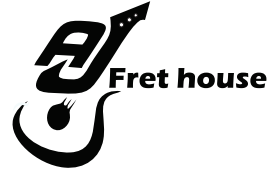What Are Chords? 🎸🎶
A chord is a combination of three or more notes played together, creating harmonic and rhythmic support for a melody. Chords form the backbone of music, helping to establish the mood, progression, and structure of a song.
Types of Chords
Chords can be categorized into three main types:
1. Triad Chords
- Triads are the simplest type of chords, consisting of three notes: the root, third, and fifth of a scale.
- Example: C Major (C – E – G)
2. Seventh (7th) Chords
- These chords include an additional 7th note along with the triad.
- They add more depth and tension to the harmony.
- Example: C Major 7 (C – E – G – B)
3. Extended Chords
- These go beyond the 7th, adding 9th, 11th, or 13th notes for richer sounds.
- Often used in jazz, neo-soul, and modern music.
- Example: C9 (C – E – G – B – D)

Understanding Chords and Their Types
Chords are the foundation of harmony in music, formed by playing multiple notes together. The diagram above categorizes chords into three main types:
- Triads – The most basic form of chords, consisting of three notes (root, third, and fifth). These can be further classified as:
- Major (happy, bright sound)
- Minor (melancholic, soft tone)
- Suspended (neither major nor minor, open-sounding)
- Augmented (tense and unresolved)
- Diminished (tense and unstable)
- 7th Chords – These chords add a seventh note to the triad, providing a richer harmonic color:
- Major 7th – Smooth, jazzy feel (Cmaj7)
- Dominant 7th – Bluesy, tense sound (C7)
- Minor 7th – Softer, relaxed vibe (Cm7)
- Diminished 7th – Dissonant and mysterious (Cdim7)
- Half-Diminished 7th – Common in jazz progressions (Cm7♭5)
- Extended Chords – These go beyond the 7th by adding 9th, 11th, or 13th notes, creating complex and rich harmonies:
- 9th Chords – Common in funk and jazz (C9)
- 11th Chords – Ethereal and dreamy (C11)
- 13th Chords – Deep, full-sounding (C13)
A Major Chord Formation
Let’s apply the same formula to the A Major Scale:
A Major Scale: A – B – C# – D – E – F# – G# – A
To form A Major Chord, we take:
- 1st note (A)
- 3rd note (C#)
- 5th note (E)
Thus, A Major = A – C# – E
A Major Chord on Guitar:
To play an A Major chord on the guitar, place your fingers as follows:
- Middle finger on 2nd fret of D string
- Ring finger on 2nd fret of G string
- Little finger on 2nd fret of B string

Conclusion
Understanding chords is essential for any guitarist or musician. Major chords serve as the foundation, and once you grasp their structure, you can explore more complex chords like minors, sevenths, and extended variations.
Keep practicing different chord shapes, and soon, you’ll be able to play your favorite songs effortlessly!
Happy strumming! 🎸
